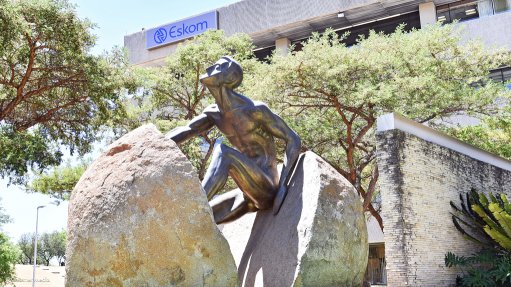
SLIGHT UNCERTAINTY
The outcomes from the Independent Electricity Management Operator Bill will impact the future of both the supply and demand dynamics of the electricity industry
Photo by: Creamer Media's Donna Slater
State-owned power utility Eskom says divisionalisation is but the “first step” in the vertical separation of the utility into three businesses under Eskom Holdings and that it is aligned with the restructuring roadmap released by the Department of Public Enterprises.
The utility’s divisionalisation is at an advanced stage, and once this has taken place, legal separation efforts will commence.
Key developments at a sector level that impact its divisionalisation can be boiled down to three key aspects, Eskom says.
The first is the Integrated Resource Plan 2019 (IRP 2019), which requires that Eskom’s Transmission and Distribution businesses are in a position to connect independent power producers to the grid. The grid access unit has been linked to distribution, which is in line with other industry benchmarks.
Additionally, the IRP 2019 calls for the Single Buyer Office to be restructured in line with the divisionalisation efforts. In light of this, Eskom confirms that the office is being restructured into a central purchasing authority with new inputs around rules and processes to ensure greater transparency and efficiency.
Secondly, Eskom is responding to the draft regulations from the Department of Mineral Resources and Energy regarding new generation capacity, which will permit municipalities to purchase energy directly from any supplier.
Thirdly, the utility tells Engineering News that the outcomes from the Independent Electricity Management Operator Bill will impact the future of both the supply and demand dynamics of the electricity industry.
The end state of the divisionalisation process will result in the creation of three subsidiaries namely Generation, Transmission and Distribution under Eskom Holdings.
The commencement and completion of legal unbundling is not entirely in Eskom’s control and as such, the utility is not in a position to commit to the length of time that legal unbundling will take.
Full unbundling, Eskom notes, depends on it securing the necessary regulatory and policy approvals.
Meanwhile, the initial divisionalisation of Eskom has no impact on Eskom’s legal structure and, consequently, no impact on bondholders. Any subsequent legal unbundling will take place with the consent of bondholders where required.
Eskom has had discussions with a number of development finance institutions who have indicated their appetite for investing in Eskom’s divisionalisation initiative. This will allow the utility to raise funding at attractive interest rates and has the potential to allow for the refinancing of existing debt at more attractive interest rates.
Discussions on various models that will aid the optimisation of Eskom’s balance sheet are still in progress with no definitive timelines at this point.